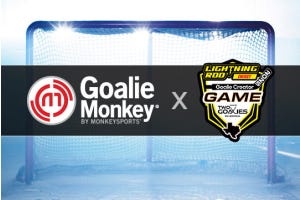Hockey Goalie Rules: How Long Can a Goalie Hold the Puck?

Hockey goalies are the last line of defense, responsible for preventing the puck from entering the net. This position demands exceptional reflexes, agility, and mental toughness. Goalies wear specialized equipment, including leg pads, blockers, gloves, and a mask, to protect themselves from high-speed shots. Their primary duties include stopping shots with any part of their body or equipment, directing rebounds away from opponents, and communicating with their defense to organize plays.
Goalies must also possess strong situational awareness and the ability to read the game. They need to anticipate opponents' moves, position themselves effectively, and remain calm under pressure. Additionally, goalies often play the puck to assist in breaking out of the defensive zone or to relieve pressure by freezing the puck for a face-off. The role is highly demanding, requiring both physical and mental fortitude, making goalies crucial to their team's success and stability on the ice.
In this article, we will cover
Regulation Time: How Long Can a Goalie Hold the Puck?
In hockey, goalies play a crucial role in managing the flow of the game, including knowing when to hold onto the puck and when to let it go. Here's an easy explanation for new players or fans about the rules for goalies holding the puck:
Why Do Goalies Hold the Puck?
- To Get a Whistle:
- Goalies can cover the puck with their glove to stop play, resulting in a whistle from the referee.
- This is often done when the goalie is under pressure from opposing players or after making a save to prevent a rebound chance.
- Stopping play with a whistle allows the goalie’s team to regroup, reset defensively, and prepare for the next faceoff.
2. Strategic Whistles:
- In high-pressure situations, holding the puck can give the team a chance to catch their breath and make substitutions.
- This is especially common when the puck is in the defensive zone for an extended time or when the goalie wants to disrupt the opponent's momentum.
When Goalies Can Get Penalized
- Delay of Game Penalty:If a goalie holds the puck without any opposing players nearby or when they are not under pressure, they are expected to play it to a teammate or move it.
- Holding the puck unnecessarily slows down the game and can result in a delay of game penalty.
- This rule ensures the game keeps moving and prevents teams from unfairly stalling.
Impact of Holding Time on Game Strategy
Defensive Strategies
- Rest and Repositioning: Holding the puck can provide a brief respite for the defense, allowing players to rest and reposition for the next play.
- Preventing Scoring Chances: By freezing the puck, goalies can stop play and prevent immediate scoring opportunities for the opponent.
- Communication: During stoppages, goalies can communicate with their defense to adjust strategies and reinforce coverage.
Game Pace
- Maintaining Flow: Releasing the puck promptly keeps the game moving and maintains its fast-paced nature.
- Avoiding Penalties: Holding the puck too long without pressure can slow the game and result in a 'delay of game' penalty, disrupting the flow and potentially disadvantaging the team.
- Strategic Pauses: Well-timed stoppages can strategically slow the game to disrupt the opponent's momentum.
Opponent's Planning
- Anticipating Play: Opponents must anticipate whether the goalie will hold the puck or play it, affecting their positioning and pressure tactics.
- Face-Off Preparation: Knowing the possibility of a face-off, opponents can prepare set plays and line changes to exploit the situation.
- Pressure Application: Opponents may increase pressure on the goalie to force a quick release or a face-off, influencing the goalie's decision-making.
If you're eager to dive deeper into the unique world of goaltending, check out our Ultimate Guide to Being an Ice Hockey Goalie, packed with tips, techniques, and expert advice to elevate your game. Explore the guide here!
Penalties for Exceeding Holding Time
When a goalie holds the puck beyond the regulated time without facing pressure, they risk a minor penalty for delay of game. This infraction results in the goalie’s team playing short-handed for two minutes, which disrupts defensive strategies and can lead to increased scoring opportunities for the opponent. Such penalties also break the flow of the game, potentially shifting momentum in favor of the opposing team. The decision to freeze the puck versus playing it quickly becomes a critical aspect of a goalie's game management, balancing the need to prevent scoring chances with avoiding penalties that could put their team at a disadvantage. For more information on how goalies can receive penalties and manage these scenarios, see Can a Goalie Get a Penalty in Hockey.
Goalie Techniques for Puck Control
Mastering puck control and stickhandling is a vital skill for goalies, enabling them to manage the flow of the game and support their team in both defensive and offensive situations. Below are key techniques and strategies goalies use to handle the puck effectively:
1. Stickhandling Basics
- Goalies use quick, controlled sweeps to clear the puck away from the crease and reduce the risk of scoring chances.
- Precision in passing is essential for connecting with defensemen, helping to maintain puck possession and control.
2. Strategic Puck Placement
- Effective puck control involves deflecting pucks to safe areas of the ice, away from opposing players.
- Proper positioning ensures that rebounds or loose pucks don’t result in high-danger scoring opportunities for the opposition.
3. Decision-Making Under Pressure
- Quick assessments are critical for deciding whether to cover the puck or play it.
- Covering the puck: Provides the defense with a chance to reset, regroup, and take a break from sustained pressure.
- Playing the puck: Can jumpstart a breakout, relieving pressure and creating offensive transition opportunities for the team.
4. Supporting Team Transitions
- Goalies can stop the puck behind the net to assist defensemen on their route to safely move the puck out of the defensive zone.
- Making "stretch" passes is another key tactic, where the goalie moves the puck up ice quickly to forwards or defensemen, allowing them to attack the offensive zone.
- By managing the puck effectively, goalies contribute to smoother defensive-to-offensive transitions.
- Well-timed plays can spark scoring opportunities, making the goalie an integral part of the team’s overall strategy.
How Long Can a Goalie Hold the Puck - Frequently Asked Questions
What are the consequences if a goalie covers the puck with no offensive threat?
The goalie risks a two-minute minor penalty for delay of game, resulting in their team being short-handed.
How do referees monitor the duration a goalie covering and holding the puck?
Referees use their judgment to assess if the goalie is being pressured and if they are holding the puck unnecessarily long.
Can a goalie cover the puck longer during a penalty kill?
No, the same rules apply regardless of the situation; covering the puck for too long can still result in a penalty.
What are the tactical advantages of holding the puck for different lengths of time?
Holding the puck briefly can allow the team to reset and regroup. Extended holding can provide rest, disrupt opponent momentum, and prepare for strategic face-offs.
Are there any differences in puck holding rules between leagues?
While the basic principles are similar, specific rules and interpretations can vary between leagues, such as the NHL, international leagues, and collegiate hockey.











